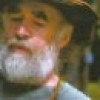Teenage Atomic Spy Ted Hall and Nagasaki Atom Bombing
The five-ton ‘Fat Man’ plutonium bombnon tinian Island being moved for loading on a B029 for delivery to Nagasaki on August 8, 1945. (US military photo)
Eighty years ago this week, Manhattan Project workers at the top-secret bomb development lab at Los Alamos, New Mexico were rushing to get the disassembled sections of the five-ton “Fat Man,” plutonium bomb ready to be flown by several planes to remote Tinian Island, a location that had an airfield and was near enough to Japan for a B-29 bomber to deliver the reassembled bomb nonstop to a target city. The “Thin Boy” uranium bomb, a ton lighter, had already been loaded aboard a ship three weeks earlier in San Francisco, had arrived at Tinian, and would soon be loaded into the ‘Enola Gay” B-29, which would deliver it to Hiroshima, where it would be the first atomic bomb to be used in war.
As the date for the dropping of the first atomic bomb drew near and as Japan’s inevitable defeat became just a matter of time, there was increasing concern in the White House and the Pentagon that Japan might surrender before the US could also demonstrate the awful destructive power of the plutonium bomb.
After the “Fat Man” had been successfully reassembled on Tinian, the date for its use was set for just three days after Hiroshima on August 9. That decision was made in August. 7, while Hiroshima was still a smoking ruin, its streets littered with the crisp ashen husks of flash-burned bodies as live bomb victims who, because they had been inside buildings, had survived the initial flash of the explosion but were having the flesh fall off their bodies in sheets and were doomed to certain early death wandered, blinded and deafened from the blast.
The US was always dead set on dropping both bombs. The official US position is that the second bomb was dropped three days after the first because the Japanese government was ‘taking too long” to surrender and the US was dreading a land invasion of the country, which. Allegedly, would happen soon. None of this holds up to scrutiny.
Remember though, that by August, Tokyo, the nation’s capital, had been destroyed by a two-day bombing on March 9-10, 1945, when waves of massive B-29 bombers dropped incendiary bombs, creating a massive firestorm. The raid obliterated sixteen square miles of the mostly wooden city, killing over 100,000 people in what remains the largest air attack (at least before Israel’s current attack on Gaza) by conventional weapons in human history. It left the Japanese government in shambles and chaos. Expecting an answer to its demand for unconditional surrender when civilian and military officials were still dealing with that chaos in the capital, and after Aug. 6 were also trying to discover what had eliminated the city of Hiroshima and to assess the damage there, would have been absurd.
Clearly the unseemly rush to nuke another target was, ironically, made so as not to give the Japanese government time to surrender, as that would have made demonstration of the plutonium bomb impossible.
Ted Hall, who at 19 was the youngest physicist at Los Alamos, had played a key role in role in getting the complicated plutonium bomb successfully detonated in the Trinity test on July 16, 1945. Three weeks before the Hiroshima bombing. His work on the Manhattan Project being done by that point, he was then focusing intently on the preparations for the climactic moment of his ten-month secret work as a volunteer spy for the Soviet Union: the delivery of every bit of information he had about the construction and successful detonation of the highly unstable plutonium-based bomb.
The US shocked nearly the entire world, including the leaders of Japan, with the total destruction of the city of Hiroshima using an atomic bomb made with U-235. The only country whose leader was not surprised by that first use of an atomic bomb was Soviet General Secretary Supreme Commander Joseph Stalin, whose spy agency, the NKVD, had received news of both weapons’........






















 Toi Staff
Toi Staff Gideon Levy
Gideon Levy Donald Earl Collins
Donald Earl Collins Eric Reinhart
Eric Reinhart Tarik Cyril Amar
Tarik Cyril Amar Rachel Marsden
Rachel Marsden Yara Hawari
Yara Hawari Belen Fernandez
Belen Fernandez Sabine Sterk
Sabine Sterk Marcel Fürstenau
Marcel Fürstenau Mikheil Khachidze
Mikheil Khachidze
